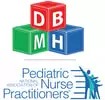Intellectual Disabilities
- Deficits in intellectual functioning -- includes reasoning, problem solving, planning, abstract thinking, judgment; academic learning, and experiential learning -- as measured by IQ scores of approximately two standard deviations below average, typically a score of 70 or below.
- Deficits or impairments in adaptive functioning, as measured by standardized, culturally-appropriate tests and includes an assessment of the individual's skills needed to live in an independent and responsible manner. Limited abilities in these life skills make it difficult to achieve age appropriate standards of behavior. Without these skills, a person needs additional supports to succeed at school, work, or independent life.
- Communication -- the ability to convey and understand information from one person to another through words and actions.
- Social skills -- the ability to interact effectively with others using/understand concepts such as social rules, customs, figurative language, and/or body language.
- Personal independence -- the ability to safely complete tasks of daily living without guidance.
- School or work functioning -- the ability to conform to the social standards and learn/apply new knowledge, skills, and abilities without excessive guidance.
Assessment & Screening
|
IQ Tests:
Verbal: Wechsler Intelligence Scale for Children, 4th edition (WISC) Nonverbal: A Guide to Child Nonverbal IQ Measures
|
Adaptive functioning tests:
|
Position Papers
Articles
Resources
|
Organizations:
|
